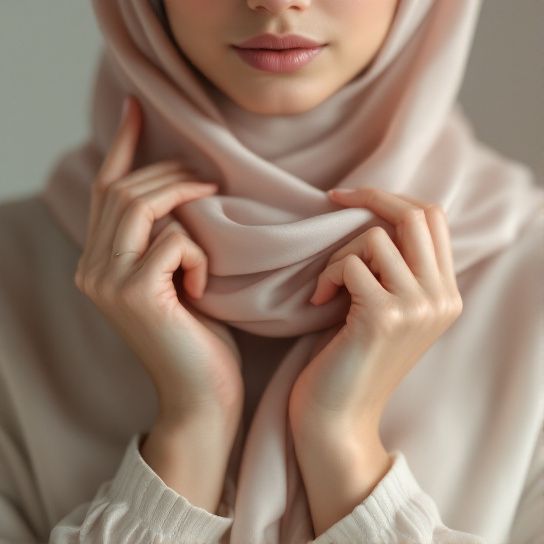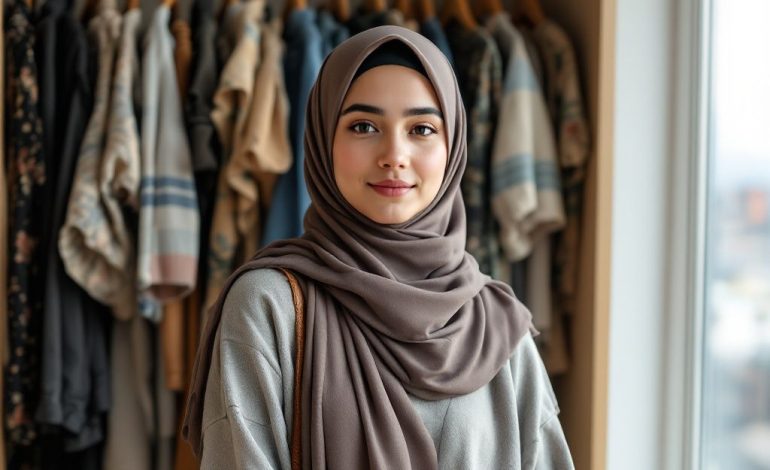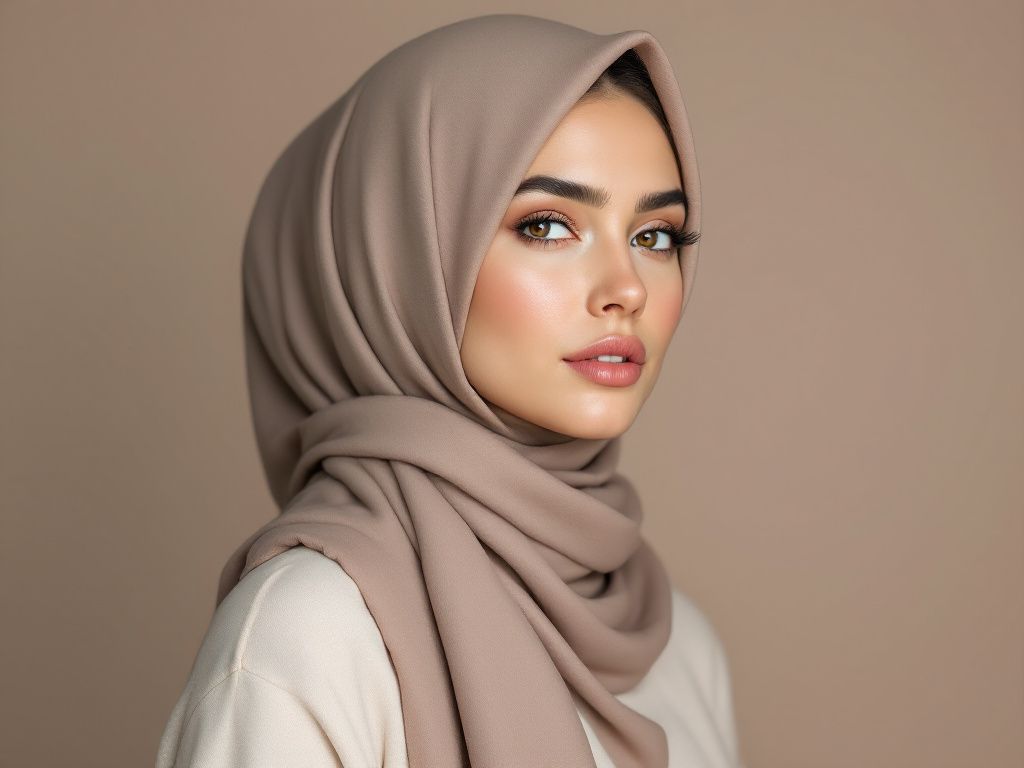Seasonal Guide: Summer to Autumn Updates in Hijab Fashion

Ah, late summer. That in-between period where everyone’s wearing flip-flops but also stashing away a cozy sweater in their bags—just in case. If you’re anything like me, this transitional time isn’t just about dealing with unpredictable weather; it’s also about finding that sweet spot in your wardrobe where summer lightness meets autumn warmth. Today, let’s dive deep into the world of hijab fashion during this season and nail down some transitional hijab styling solutions. Ready? Let’s go!
Late Summer Style Solutions with Hijab Fashion
Here’s a thought: How often do you find yourself staring at your wardrobe thinking, “What now?” As the summer heat begins to mellow and the autumn crispness stealthily approaches, finding the right hijab style that isn’t too summery nor entirely fall-ready can definitely be a challenge. But it’s kind of a fun challenge, if you ask me.
Embracing Layering Without the Bulk
Layering is the game-changer here. Think thin layers, like grabbing your favorite lightweight cardigan instead of a heavy coat. This way, you keep warm when those cool breezes roll in, but you can also peel layers off to stay comfy if the sun decides to make a bold comeback.
Start with breathable, moisture-wicking fabrics because, let’s face it, even in late summer, humidity can catch us off guard. Light cotton or bamboo blends make great base layers beneath your hijab and outfit because these fabrics offer that balance—keeping you cool while still being easy to layer.
Add a thin, open-front cardigan, possibly in a neutral or soft earth tone. It matches with everything and adds that hint of autumn feel. Olive green, burnt orange, or even a soft mauve—these colors not only scream “fall is coming” but also blend elegantly with a wide range of hijab color palettes. But hey, always keep your personal style in mind. Your personality should shine through every layer!
For hijab-specific layering, consider two-layer hijab styling. Try a gauzy modal hijab wrap that rests effortlessly against a more structured underscarf. This not only gives a rich texture but also provides additional warmth. Mix and match colors, getting bolder by pairing a neutral-tone underscarf with a vibrant outer wrap or vice versa.
The Material Shift: Easier Than You Think

Material choice makes a world of difference. You might be thinking of transitioning from light-as-air voiles to heavier fabrics like cashmere or wool blends, but before you go full-on autumn, moderation is key.
Choosing the right hijab material is where the magic of both comfort and style happens. Transitioning fabrics smoothly from summer cotton and linens to autumn-friendlier satins or silks is easier than you might think. These fabrics drape wonderfully—offering warmth without abrupt bulk. Trust me on this one.
If you’re someone who loves a bit of novelty, try hijabs with subtle tactility, like crepe or silk. They’re glazing towards the new season vibe while still breathable enough for leftovers from summer’s warmth. As it gets cooler, bring in those pashminas and soft wools for the occasional chillier days.
Let’s Talk Colors: Late Summer Edition
Colors can dictate mood more powerfully than you might imagine. Transition the usual breezy pinks and mint greens out with deeper shades without shifting radically.
Think sandy nudes or sunset yellows; they’re summery yet have a hint of that transition to dusk—a fitting metaphor for moving from summer into autumn. You’re still staying bright but embracing deeper hues, like cinnamon reds or rusty oranges, which feel perfect for coffee walks and cozy inside hangouts.
You can circle back to any staple colors like black or navy, which give a seamless blend into both seasons and outfit combos. Of course, polka dots, gentle florals, or geometric prints are great allies during this switch. The key is balance.
Must-Have Accessories: A Flash of Practicality
This wouldn’t be a complete seasonal switch without diving into essential accessories. Cute and practical is the path forward. Your greatest allies: light scarves that can double up, sun-hats that shade you and fight off the autumn breeze, and of course, little charms like silver pins or brooches ready to anchor down those flowing hijabs on windier outings.
Add texture with wool-banded watches or leather strap bags that feel rich against lightweight layers. They not only add intrigue but tether your outfit—making it appear thoughtfully put together. And don’t be shy about those boots sitting at the back of your closet. Booties, whether ankle-length or calf, can start making their way into your wardrobe around this time, knowing you’ll get all the utility you’ll need for various weather.

Get Creative: Outfits That Shout “I Aced the Transition”
Here’s a quick idea: an outfit table!
| **Occasion** | **Late Summer Components** | **Ace the Transition** |
|---|---|---|
| Casual Get-Together | Light cotton palazzo, knitted sweater, woven hijab | Add scarf variegation and colored flats |
| Office Look | Chiffon blouse, pencil skirt, sleek underscarf | Move in tailored blazer, neutral hijab |
| Chill Weekend Vibin’ | Denim culottes, loose tunic, fun pastel hijab | Create boldness with dark-themed footwear |
| Brunch Date | Printed maxi dress and delicate silk hijab | Glam up with few layered bangles |
Feeling inspired yet? Don’t worry, I’ve still got a few extra tips up my sleeve!
Tips for Effortlessly Navigating the Seasonal Switch
- Read the Weather: Always, always check the day’s weather before heading out! Sometimes it’s a guessing game that can swing either way.
- Versatile Hijab Styles: Play around with hijab draping techniques. You can move from an over-the-shoulder bardot style into chic turban twists. Feel comfortable experimenting and developing a style that feels right for both the weather shift and you.
- Befriend Transitional Wardrobe Staples: Keep those solid color long-sleeved tees, jeans, and sneakers close. They’re basic but brilliantly adaptable.
- Stay Fresh & Cool: Tuck some moisturizer or face mist into your bag, especially during walks of a breezy-kinda-warm-small surprises combo of weather day. Your skin will thank you!
- 5. **Practical and Attractive Bag Choices: Go for one that’s small yet packs all you need, transitioning effortlessly with your style and color cues.
Common Mistakes and How to Avoid Them

Take it from anyone who’s gotten caught in an unpredictable drizzle with the wrong gear on! Here’s what to look out for:
- Ignoring Layering: Jumping straight into heavy layers too soon can bring on more discomfort than warmth.
- Color Overload: Stay focused—too many color changes can actually undermine the entire thematic look you’re going for.
- Underestimating Scarves’ Power: They’re not a little afterthought—they’re based iris, they’re safety nets in style revamps and can save many hemming and hawwing moments in style prep.
Getting this balance just right is essential, but fortunately, with a mix of thoughtful layering, smart material choices, and a dash of creativity, stepping out with chic confidence comes naturally—all while holding onto the coattails of summer just a little longer and graciously welcoming fall.
Conclusion: Cherish This Transition
Friends, at the heart of this summer to autumn shift lies an exhilarating opportunity to be creative with your hijab fashion and seamlessly transition through distinctive styles, weaving in those comfort layers just right. By thinking with flexibility in mind, considering breathable materials, layering skillfully, and infusing your outfits with seasonal color stories, you’ll remain fashionably forward and effortlessly adaptable to whatever the seasonal whimsey tosses your way.
This really is more than just about appearances. Comfortable, secure, and stylish are like an ensemble because they prime us for everything we’re destined to embrace—whether they’re impromptu hikes, coffee dates, or maybe just a just-because outing. Enjoy the seasonal switch, keep it authentically you, and embody each day like it’s an opportunity meant for new beginnings.
Feel free to revisit these tips as you glide into cooler days. They’re here whenever you need that gentle nudge or quick refresher. Wishing you beautiful transitions filled with warmth, comfort, and endless style possibilities! Stay creative and keep embracing each moment within this unique journey of seasonal chapters.
Frequently Asked Questions
How often should I wash my face mask to prevent maskne?
To prevent maskne, it is crucial to wash your face mask regularly. For fabric masks, wash them after every use, similar to how you would wash your underwear[2][3][4]. Disposable masks should be tossed after each use to prevent the buildup of bacteria and other contaminants[3][5>.
What type of skincare products are best for preventing maskne?
For preventing maskne, use skincare products that are oil-free or noncomedogenic. These products, such as gentle cleansers, moisturizers, and sunscreens, help prevent clogged pores and reduce the risk of acne. Look for products containing salicylic acid or benzoyl peroxide for their acne-fighting properties[1][3][4>.
How can I reduce friction and irritation caused by wearing a face mask?
To reduce friction and irritation, choose a mask that fits well and is made from breathable fabrics like cotton or bamboo. Loosen the mask straps, use pads under the straps, or consider a headband-style mask to minimize friction. Taking brief breaks to remove the mask and allow your skin to breathe can also help[2][3][5>.
What are some additional tips to prevent maskne while wearing a face mask?
In addition to regular mask washing and using the right skincare products, avoid touching your face, skip makeup or use noncomedogenic makeup, and moisturize your skin to keep it hydrated. Also, limit the use of active ingredients like retinol or benzoyl peroxide during the day when wearing a mask, and consider using a topical antimicrobial cream to prevent bacterial buildup[1][3][4>.
References






